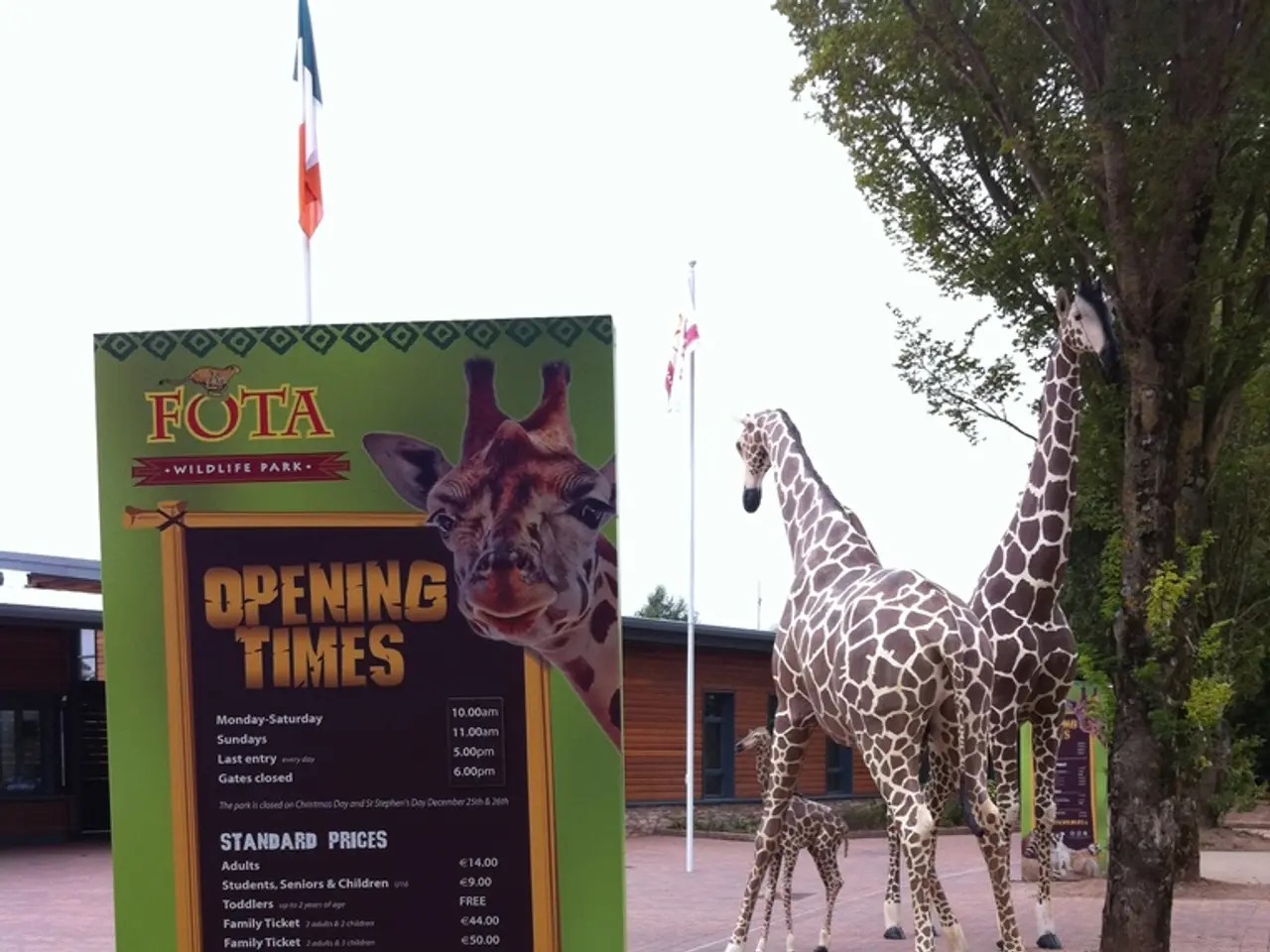Zoos in the Modern Era Restoring Public Interest in Wildlife Conservation
Modern Zoos Emerge as Conservation Hubs and Educational Sanctuaries
Modern zoos are no longer just places of entertainment, but are transforming into sanctuaries with a strong focus on conservation, education, and animal welfare. These institutions are evolving to create naturalistic habitats that allow animals to express natural behaviors, protect endangered species, and engage the public through educational and conservation leadership programs.
Key ways modern zoos are evolving include:
- Conservation Focus: Zoos like Chicago’s Brookfield Zoo have established dedicated conservation centers, such as the Gorilla Conservation Center, that serve dual purposes of providing enriched living environments for animals and advancing conservation science. These centers support family groups and social structures for animals and are part of broader species management programs emphasizing genetic diversity and long-term survival of endangered species.
- Education and Community Engagement: Programs such as the King Conservation Leadership Academy at Brookfield Zoo integrate educational opportunities, bringing students close to animals and training ambassadors proficient in animal care and conservation efforts. Such initiatives foster awareness and inspire future conservationists.
- Sanctuary-Style Environments: Places like Zealandia in Wellington exemplify a move toward ecosanctuaries. Zealandia is a fully-fenced urban sanctuary aiming to restore ecosystems to a pre-human state, allowing native wildlife, including rare birds and reptiles, to thrive in semi-wild conditions. It offers immersive visitor experiences that promote connection with nature and awareness of conservation success.
- Welfare Improvements: Modern zoo habitats are designed to replicate natural environments, providing animals with appropriate space, enrichment, and social opportunities. This shift prioritizes animal welfare over simple exhibition, reducing stress and improving quality of life for captive animals.
- Global Conservation Grants and Partnerships: Organizations and associations supporting zoos provide grants that fund species protection projects, habitat restoration, and community-based conservation and education projects worldwide. These efforts demonstrate how zoos contribute actively to in situ and ex situ conservation.
- Scientific Research and Collaboration: Zoos collaborate globally to maintain genetic diversity through managed breeding programs and to support conservation science, highlighting their role as centers for research and species preservation rather than just entertainment.
Modern zoos are becoming centers of scientific discovery, leading to breakthroughs in animal care and conservation strategies. They serve as gateways to the wider world of wildlife, bridging the gap between people and the challenges and beauty of the wild. Fostering emotional connections through animal ambassadors, modern zoos encourage empathy and action for wildlife.
A trip to the zoo can be a transformative experience, sparking a lifelong love of wildlife and inspiring guests to adopt animals, donate to conservation campaigns, or pursue careers in science and animal care. Zoos partner with schools, businesses, scientists, and conservation groups for community outreach programs and volunteer opportunities. Every ticket sold supports global conservation efforts, including the rescue, rehabilitation, and reintroduction of endangered species.
Modern zoos offer immersive experiences like virtual safaris, behind-the-scenes tours, and live-streamed animal cams, transporting visitors to distant habitats. They work hard to make every visit meaningful, aiming to ignite a passion for the natural world in every guest. Zoos serve as powerful centers of conservation, education, and hope. The ripple effect of community outreach programs can inspire whole communities to protect their natural heritage.
[1] Brookfield Zoo. (n.d.). Brookfield Zoo Conservation. Retrieved from https://www.czs.org/conservation [2] Zealandia. (n.d.). About Zealandia. Retrieved from https://www.zealandia.org.nz/about-us/ [3] Association of Zoos and Aquariums. (n.d.). AZA Conservation. Retrieved from https://www.aza.org/conservation [4] World Association of Zoos and Aquariums. (n.d.). WAZA Conservation. Retrieved from https://waza.org/conservation [5] Zoo Check. (n.d.). Animal Welfare. Retrieved from https://www.zoocheck.org/wildlife/animal-welfare/
- Modern zoos like Chicago’s Brookfield Zoo, as mentioned in [1], are dedicating resources to conservation centers, such as the Gorilla Conservation Center, for dual purposes of providing enriched living environments for animals and advancing conservation science.
- These conservation initiatives, as seen at Brookfield Zoo, integrate educational opportunities, training the next generation of conservationists, as demonstrated by the King Conservation Leadership Academy.
- Sanctuaries like Zealandia in Wellington, introduced in [2], aim to restore ecosystems to a pre-human state and provide semi-wild conditions for native wildlife, including rare birds and reptiles.
- The global scientific community focuses on improving animal welfare, as demonstrated by modern zoos like Brookfield Zoo, which designs habitats to replicate natural environments, providing animals with appropriate space, enrichment, and social opportunities.
- Organizations like the Association of Zoos and Aquariums (AZA), discussed in [3], provide global conservation grants that fund species protection projects, habitat restoration, and community-based conservation and education projects worldwide.
- Collaboration is essential for zoos and their associated organizations, as highlighted by both the AZA and World Association of Zoos and Aquariums (WAZA) in [3] and [4], in maintaining genetic diversity through managed breeding programs and supporting conservation science.
- Zoos, awareness labs for wildlife, are central to scientific discovery, bridging the gap between people and the challenges and beauty of the wild, as described in the text.
- Becoming emotionally connected to animals through ambassadors at modern zoos encourages empathy and action for wildlife, as suggested in the text.
- A visit to a zoo can be a transformative experience, leading to lifelong loves of wildlife, adopting animals, donating to conservation campaigns, or pursuing careers in science and animal care, as mentioned in the text.
- Zoos partner with schools, businesses, scientists, and conservation groups for community outreach programs and volunteer opportunities, as explained in the text.
- The cared-for animals in modern zoos, the educational programs, and the global conservation efforts all contribute to a vision of personal growth and a lifestyle that champions health-and-wellness, mental-health, fitness-and-exercise, environmental-science, home-and-garden, education-and-self-development, and career-development, as well as an increased commitment to online-education and lifelong learning, as derived from the ideas presented in the text.




